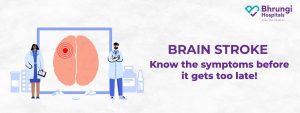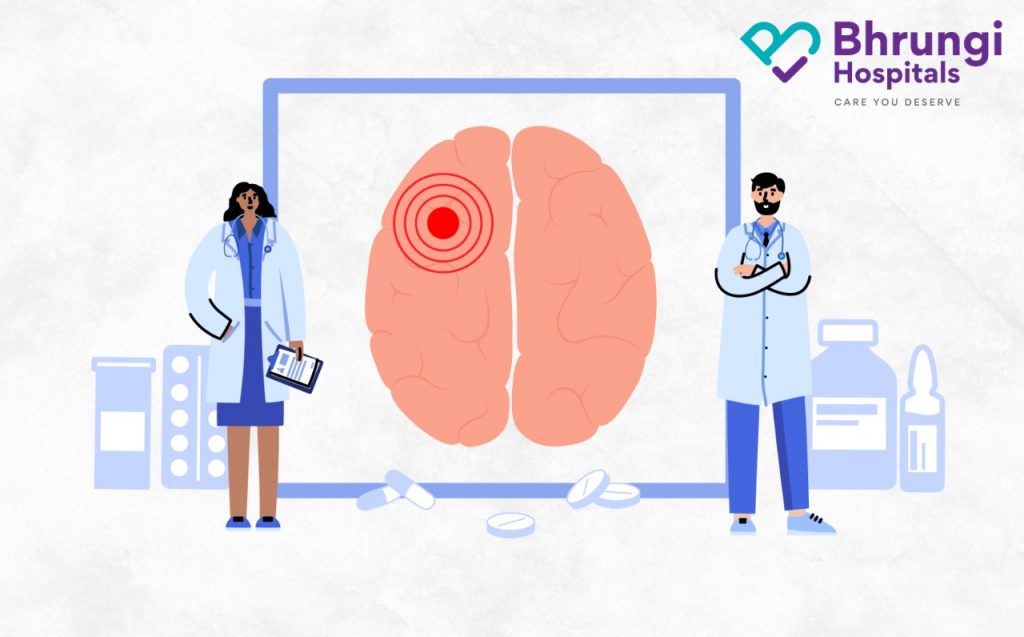
A stroke, also kenned as a brain attack, occurs when brain cells die suddenly due to a lack of oxygen. A blockage can cause it in the brain’s blood supply or a rupture of a cerebral artery. As a result, the patient may lose the ability to speak suddenly, experience memory problems, or become paralyzed on one side of the body.
Stroke is the second foremost cause of death and disability on the planet. Every year, about 20 million people have a stroke, with 5 million of them dying. It is a significant cause of death and disability among India’s youth.
There are two kinds of strokes:
Ischemic Stroke – A blood clot (or thrombus) forms and blocks blood flow to a part of the brain, accounting for roughly three-quarters (or 80%) of all strokes. An embolus is a blood clot that appears somewhere in the body and breaks off to become free-floating. This stray clot could travel through the bloodstream to the brain, causing an Ischemic Stroke.
Hemorrhagic Stroke – It occurs when a blood vessel on the surface of the brain bursts and fills the space between the brain and the skull with blood (subarachnoid hemorrhage) or when a defective artery in the brain bursts and fills the surrounding tissue with blood (hemorrhagic stroke) (cerebral hemorrhage). Hemorrhagic stroke accounts for 20% of all stroke cases.
Many stroke victims develop weakness on one or both sides of their bodies, have trouble speaking, incontinence, loss of speech or thinking, and cannot walk or are bedridden. Early intervention can help to prevent brain damage and complications.
What are the Symptoms?
Every second after a vessel blockage causes more brain tissue to die, so patient recognition of an acute stroke is critical. Therefore, the acronym F.A.S.T. get recommended by the National Stroke Association. Face, Arms, Speech, and Time are the acronyms for F.A.S.T.
Act F.A.S.T.
If you know anyone is having a stroke, instruct them to.
FACE- Ask the person to smile. Is there a droop on one side of the face?
A.R.M.- Ask the person to raise both arms. Is there a downward slant to one of your arms?
SPEECH – Ask the person to recite a simple sentence. Are the words garbled? Is the speech slurred? Is the person able to correctly repeat the sentence, or if they have difficulty understanding?
TIME – If the person exhibits any of these symptoms, it is critical to act quickly. Call 9-1-1 and get to the hospital as soon as possible.
Brain cells begin to die, and symptoms appear within minutes of having a stroke. When a person has a stroke, approximately 32,000 brain cells die in one second; an ischemic stroke can kill 1.9 million brain cells in the next 59 seconds. As a result, it’s critical to recognize these early signs and symptoms, as prompt treatment is essential for recovery. Symptoms that are common include:
- Dizziness or unconsciousness that occurs suddenly
- Struggle in walking, loss of balance, sensation, or coordination
- Difficulty seeing with one or both eyes
- Speech problems
- Swamp swallowing
- Blurring or loss of memory
- Muscle stiffness
- Behavioral changes
- Numbness, faintness, or paralysis on one side of the body
- Blurred, blackened, or double vision
- Sudden severe headache
- More minor strokes (also known as silent strokes) may not cause any symptoms, but they can still cause brain tissue damage.
How to prevent a stroke
All strokes cannot be prevented by changing one’s lifestyle. However, many of these changes can make a significant difference in lowering your stroke risk.
The following are some of the changes:
- Quit smoking. If you smoke, you can reduce your risk of stroke by quitting now. You can talk to your doctor about making a quit plan.
- Keep a moderate weight—obesity and being overweight increase the risk of having a stroke. Eat a well-balanced diet and engage in physical activity regularly to help you manage your weight. Both of these methods can help lower blood pressure and cholesterol levels.
- Get regular checkups. Consult your doctor about how often you should have your blood pressure, cholesterol, and other conditions checked. They can also provide you with guidance and support as you make these lifestyle adjustments.
The primary goal of treatment for Ischemic Stroke at the Bhrungi hospital of Neurosciences is to restore blood flow to the brain. It gets accomplished by administering blood clot-busting medications such as aspirin, heparin, or tissue plasminogen activators within three hours of the stroke. Additionally, surgical procedures to open up or widen arteries may be performed.
To help all types of stroke patients, the Bhrungi Hospitals of Neurosciences is equipped with modern diagnostic and imaging equipment, as well as the most up-to-date therapeutic options. We also have the faculty, infrastructure, and experience to be one of the best centers of its kind in the country.
We have a team of highly trained neurosurgeons, neurologists, interventional neurologists, neuro anesthetists, critical care experts, and specialized nurses who collaborate to provide world-class healthcare.
Feel free to Reach us Click Below
Top-ranked neurosurgeons | Best neuro services | Best neurology hospitals in Hyderabad | Best Neurologists In Hyderabad | Top Hyderabad neurologist | Neurosurgery Hospital in Hyderabad








